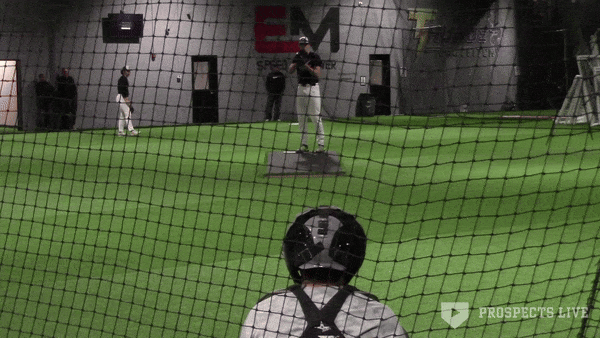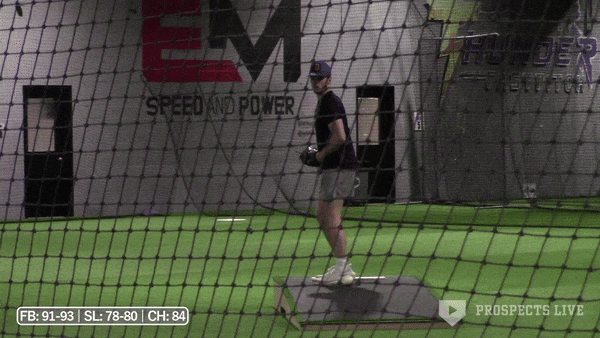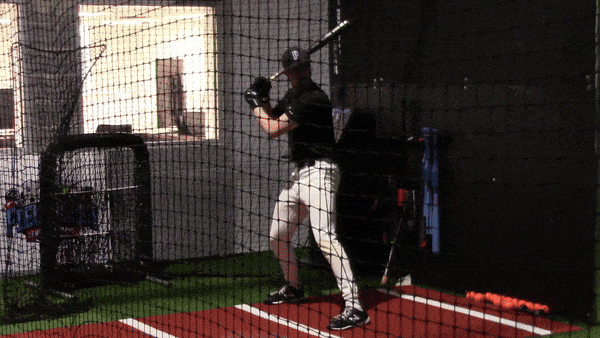High school baseball is upon us, with Kentucky baseball starting last week and Michigan's baseball season already underway as this article is being posted. Early looks of the Kentucky season have shown positive signs for the few arms mentioned prior, as they are already flying with a great start to the season. This upcoming Saturday (March 25th), Ohio baseball season begins with many touted matchups that will be must-sees for the avid baseball lover in the Ohio area. If the weather cooperates, I will be in the fields watching the OHSAA (Ohio High School Athletic Association) Division-I reigning champions Archbishop Moeller start their season against Strongsville and will provide a live look later next week on the matchup.
Part three of our series continues here, analyzing the region's infield prospects. The Ohio Valley continues the trend from the last few years of us being spoiled with a few top-tier and toolsy prospects following the footsteps of Ohio Valley infielders Colt Emerson, Colston Montgomery, Henry Kaczmar, and Alex Mooney, who displayed their advanced baseball skills at the variety level to either hear their name called in July out of high school or became a high-level dude walking onto campus in the fall and fought for a spot in the lineup out of the gate. Further, we have one SS who could hear his name called early on day one this year.
The 2024 class for this prep baseball season is stacked with dudes who possess future major-league tools and who will have huge impacts on their respective college programs or clubs next season. All of these guys with future breakdowns are dudes I can see getting their names called in July or dudes to keep noted as potential future high-round selections in 2027. The honorable mention group of dudes is in the next tier of guys who I can see get their names called sometime in the 2027 or 2028 draft after some seasoning versus better competition or added time with maturity to grow their pro tools.
| 3B/SS Caleb Bonemer, Okemos HS (MI) |
| 6-foot-1 | 195 - pounds | Commit: Virginia | B/T: R/R | Draft Day Age: 18 yr 9 mo |
Bonemer enters the 2024 draft cycle as the top high school infield prospect in the class due to his impressive combo of physicality, explosive tools, and massive stock bump from the 2023 prep showcase and summer circuit. Bonemer is the most prolific infielder we have seen in a hot minute to come out of the prep ranks in Michigan. Further, Bonemer has the chance of joining highly touted infielders like Colston Mongomery and Colton Emerson of being Ohio Valley infielders drafted in the first round in recent years - in short, save your seats now for Okemos high school baseball games this spring as there will not an open seat if you wait till Michigan's season to start with scouts soaring to Michigan with anticipation to watch him play.
Bonemer is a physical athletic specimen on the diamond with a muscular build that oozes projectable strength with strong hands, wrists, and quads/lower half. In the box, everything works in sync with a quiet load, a small front-foot-striking stride, and a shorter compact swing displaying minimal wasted effort attacking the baseball with eye-popping explosive bat speeds, triple-digit exit velocities, and barreling nearly everything he attacks. When he punishes baseball, he is typically pull-side happy with the power but has shown the ability to exhibit XBHs up the middle on occasion. Contact-wise, he can hit all over the zone and spray hits anywhere throughout the field. Due to previous looks, scouts this spring would like to see him lower the whiffs in the game from inferior competition (a similar issue we saw in the 2021 varsity season from a similar comp SS in Brady House).
In the field, Bonemer is a very athletic and projectable infielder with a high likely chance to stay on the left side of the dirt with his soft hands, smooth fluid feet/motions towards the baseball, plus range, plus field awareness/baseball IQ, strong arm, good reactions, impressive composure/body control, and quick reactions to the baseball. Further, Bonemer allows his athleticism to play throughout his game without any hiccups (even during the challenging plays). Similar to Brady House, he is massive for his size. So, scouts will need to determine if the size will make him shift out of the middle and slide over to 3B or corner OF in the future when he hits physical maturity.
Overall, Bonemer has shown everything that scouts typically look for from prep position players during the draft process and is a very polished high school prospect. So far, he has made a solid case to be considered a top 15 or even top 10 selection in the draft with his very high ceiling. Due to the strong college class this season, he could fall down the boards with teams looking for more maturity and quicker to show talent. If Bonemer has an eye-popping spring as he did over the summer, he may force the hand of an organization to take him higher than most rankings and mock drafts have him before the Michigan prep season.
Preseason Draft Grade: Top 5 HS player & Top 25 overall draft talent; First-round grade w/ top 10 upside
| 1B/RHP Jake Hanley, William Mason HS |
| 6-foot-6 | 230 - pounds | Commit: Indiana | B/T: L/R | Draft Day Age: 18 yrs 11 mo |
Presumably, the most prominent and premier prep baseball athlete out of the Ohio Valley, Hanley early this year, attended the Prep Baseball's Super 60 event and impressed scouts in a showcase setting by blasting baseballs nearly 400 feet and recording triple-digit exit velocities (103.5 mph). Hanley physically stands out from the typical high school hitter with a 6-foot-5, 235-pound XL frame with loud upside tools and an even higher ceiling. Hanley has been a consistent workhorse out of a prolific baseball program at William Mason High School, which in recent years, has produced professional players in Nicholas Northcut and former first-round selection T.J Zeuch.
A few weeks back, we mentioned the pitching upside Hanley has made over the last calendar season, making him a difficult profile to project between being an offensive middle-of-the-order bat, a future high-velocity arm, or the unicorn of both. This week, we will dive into what we have seen since his early prep years as an uber-physical middle-of-the-order first baseman.
If you want to go back and see his pitching profile going into the Ohio prep season, you can see it Here
As mentioned above, Hanley is a large physical frame athlete who shows premium projectable upside as a professional ball player with muscular proportions and strength throughout his body. Hanley displays very simple and smooth operations at the dish, exhibiting an athletic balanced stance with a smooth load, quiet leg kick, soft stride, whippy hands, and a controlled barrel. When he attacks baseballs, his natural strength is loud, exhibiting a mixed lofty/upward violent swing that produces thunderous hard contact every time he puts the ball in play (92.9% hard-hit rate and an average of roughly 97 mph or more EVs). Further, he possesses violent bat speed (76 mph bat speed average), allowing his tall lefty frame to get into triple-digit exit velocities. The projection for him to stay as a middle-of-the-order bat is sustainable. However, Hanley will need to exhibit his lofty/upward violent swing more often and produce more XBHs in-game as too frequently, his hitting ability against tougher pitching competition leans more into straight line drives and hard ground balls due to his occasional neutral attack angle (or insufficiency of displaying on-plane efficiency) and his bat path becoming flat in his swing versus better competition from his need in making up for timing issues in his load and his lengthy bat path (all fixable attributes in his game). On the bases, Hanley is an average runner at best overall.
Depending on the scout(s) you speak with, there are some who believe that the two-way potential is real within Hanley, and when he breaks through the next ceiling within his development, it will be more apparent. There is no question that the hit tool and the metrics that come with it are impressive, with above-average potential projections attached throughout. However, suppose Hanley would get drafted in July. In that case, it is more likely that he will be drafted because of the toolsy upside in his hitting abilities that he displayed over the winter showcase setting, a positive offensive spring performance, and an imaginable combine invite (with the off-the-field element of the money being right). Suppose Hanley gets the chance to go to Bloomington in the fall. In that case, the coaching staff will definitely tinker with his pitching potential and get him out on the mound next spring (I'm highly assuming Risedorph, Sinnard, and Foley are drafted this year and not coming back) while giving him at-bats in fall ball and early in the spring.
In conclusion, I love to see players get their ability to achieve their dreams and get their money from the hard work they have put into baseball. Nevertheless, my selfish side would love to see him go to college and try the two-way ability out, as I can see him evolving into a Big Ten/Midwest version of Jac Caglianone or Brendon McKay because of the upside he has in his tools, both ways. Additionally, he wouldn't be the first Cincinnati native to pass on big money, double down, and prove themselves in college for a bigger payday if he did (Andrew Benintendi was drafted in the 31st round by the Cincinnati Reds in 2013 and then was a top 10 overall selection in 2015 by the Boston Red Sox. Further, Zeuch went down a similar route before being drafted 21st overall by the Toronto Blue Jays). Thus, seeing the hoops and challenging tasks for scouts to determine the future for the most polarizing, intriguing, and tooled-up athlete in the Midwest of this class in Hanley.
Preseason Draft Grade: Top 100 HS player; Day 2 grade but probably going to school.
| C Hogan Denny, Mooresville HS (IN) |
| 6-foot-0 | 190 - pounds | Commit: Indiana | B/T: R/R | Draft Day Age: 18 yr 8 mo |
A decorated multi-sport athlete from the Hoosier State, Denny is a two-time All-State backstop who has shown his physical athleticism from the diamond to the gridiron as his school's star quarterback (as an underclassman showed some advanced athleticism as a wide receiver for the football team). Denny is by far the best prep catcher in the region who has a strong accurate arm behind the dish and has displayed desirable power traits in the box. Like many others on these lists, Denny was a Prep Baseball Super 60 invitee and, during the event, displayed some of the most power in the country by blasting baseballs over 106 mph and demonstrating some of the most explosive bat speeds you will see slightly over 86 mph. Further, outside of being a star catcher for Mooresville HS and being arguably the most productive offensive juggernaut in Indiana prep baseball, Denny has displayed stuff on the mound by recording over 100 strikeouts as a lights-out reliever guiding his varsity squad as a year-in and year-out state championship contender. His current projection for his future is staying behind the dish, so below, we will stick with his offensive and defensive upside as a catcher.
In the box, Denny displays a sturdy physical build that shows strength throughout his frame. His advanced athleticism could be considered sneaky due to his build, but he is a tremendous athlete overall (he has swiped 67 stolen bases in varsity baseball and has made some appearances at SS). Operating in the box, Hogan now works with an athletic balanced stance where, in the past, he had a wide stance, but he has tinkered with his approach at the plate to harness more into his power profile. Further, he is a simple mover from the right side, displaying quick hands, a quiet controlled load, and a leg lift stride that blasts the barrel into the zone with oozing power from his lower half from a shorter swing. A very confident and good poised hitter. His swing/hands occasionally can get a little too early, but overall, it is on time with the barrel being in the zone for a long time at a linear level with intent. When watching him, many scouts have used the scouting vocabulary of Hogan having an “advanced approach and very disciplined.” If you are a nit-picky individual, you can say that he needs to be more rotational to generate more power. However, with this offensive profile, he already has enough natural strength to generate the long ball when needed (explains the change in stance). Overall, the power he has is ridiculous, with still more in the tank. In addition, his offensive profile is more of a gap-to-gap approach with XBH upside and the ability to spray it all over the field. Additionally, the bat works well in-game and outside of a contained environment (at the varsity level, he has produced over 35 XBHs and 19 long balls entering his senior year). His projection shows that he can stay in that middle-of-the-order stop in the lineup with a floor of a six-hole hitter.
Defensively, behind the dish, Hogan's clear best attribute is his strong and accurate arm, recording arm speeds in the low 80s. Overall, he is an advanced catcher with pop times in the upper 1.80s and low 1.90s while displaying quick reactions, soft hands, strong lower half/knees, a quick release out of a short compact ¾ arm slot, exemplary athletic footwork, fast transfer abilities, and a high baseball IQ. The quarterback background comes into play with his ability to read the field/basepaths and make decisions on the fly very well in a quick process. He shows good field general qualities to stay behind the dish at the next level or even transition to the corner infield if needed.
Hogan may get some scouts' looks this spring due to his decorated athleticism, track record of offensive production at the varsity level, and participation in previous high-level baseball events (Prep Baseball Super 60 and PG Nationals). I can easily see him being in the running for Gatorade Player of the Year for the state of Indiana and be a strong candidate for the Johnny Bench Award (an award given to the top catcher at the high school level from the Ohio, Kentucky, Indiana and West Virginia region). Overall, I envision Hogan as a high-follow prospect from the Hoosier State with more 2027 MLB Draft upside than this summer. Henceforth, I see Hogan going to college this fall to better himself versus good Big Ten competition and making an impact behind the dish as a backup catcher his true freshman year before breaking out as the main dude behind the plate for the Hoosiers moving forward. Suppose the power potential makes a further jump in the near future, and his offensive profile translates at the college level. In that case, the Hoosiers may have another high-level athletic power profile backstop as they did nearly a decade ago with Kyle Schwarber.
Preseason Draft Grade: N/A - Future college backstop
| Honorable Mentions |
| SS/OF Alex Koelling, William Mason HS (OH) |
| 6-foot-1 | 170 - pounds | Commit: Ohio State | B/T: L/R | Draft Age: 18 yr 1 mo |
| SS/3B Alex Martin, Boyd County (KY) |
| 6-foot-3 | 195 - pounds | Commit: Xavier | B/T: R/R | Draft Age: approximately 18 yr 0 mo |
| SS/3B Issac VanderWoude, Illiana Christian HS (IN) |
| 5-foot-11 | 188 - pounds | Commit: Virginia | B/T: L/R | Draft Age: approximately 19 yr 0 mo |
| 3B/RHP Jackson Frasure, Chaminade-Julienne (OH) |
| 6-foot-2 | 225 - pounds | Commit: Akron | B/T: R/R | Draft Age: approximately 19 yr 0 mo |
| SS Parker Brzustewicz, St. Mary’s HS (MI) |
| 6-foot-3 | 185 - pounds | Commit: Notre Dame | B/T: R/R | Draft Age: 19 yr 6 mo |
| SS/C/2B Parker Corbin, Cincinnati Country Day (OH) |
| 5-foot-9 | 180 - pounds | Commit: Maryland | B/T: L/R | Draft Age: 18 yr 11 mo |
| SS Ryder Kirtley, Troy HS (OH) |
| 6-foot-0 | 185 - pounds | Commit: Virginia Tech | B/T: R/R | Draft Age: 18 yr 10 mo |
| 1B/RHP Sawyer Solitaria, Saint Ignatius (OH) |
| 6-foot-3 | 230 - pounds | Commit: Kent State | B/T: R/R | Draft Age: 18 yr 2 mo |























































